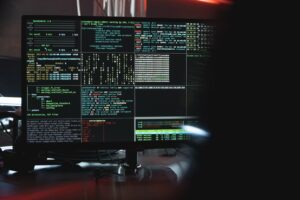
Data leakage is a significant concern for businesses and organizations of all sizes. The unauthorized transmission of data from within an organization to an external destination or recipient can lead to severe consequences, including financial losses, damage to brand reputation, and potential legal implications. Therefore, implementing effective strategies for data leakage detection is crucial in today’s digital age.
One of the most effective strategies for data leakage detection is the deployment of Data Loss Prevention (DLP) tools. These tools are designed to monitor, detect, and prevent data leakage in a network. They work by identifying sensitive data, tracking its movement, and preventing unauthorized access or transmission. DLP tools can be configured to monitor various types of data, including emails, documents, databases, and more. They can also be set up to alert administrators when suspicious activity is detected, allowing for immediate action to be taken.
In addition to DLP tools, another strategy is the use of encryption. Encryption converts data into a code that can only be deciphered with a specific key. This means that even if data is intercepted during transmission, it cannot be read without the key. Encryption can be applied to data at rest, in transit, or in use, providing comprehensive protection against data leakage.
Furthermore, businesses should also consider implementing a robust access control system. This system ensures that only authorized individuals have access to sensitive data. Access control can be based on roles, with different levels of access granted depending on an individual’s role within the organization. This not only helps to prevent unauthorized access but also makes it easier to track and monitor data movement within the organization.
Regular audits are also a crucial part of any data leakage detection strategy. Audits involve a thorough review of an organization’s data handling practices, including how data is stored, accessed, and transmitted. Audits can help identify potential vulnerabilities and areas for improvement, ensuring that the organization’s data protection measures are up to date and effective.
Employee training is another essential strategy. Often, data leakage is the result of human error or lack of awareness. By providing regular training on data protection best practices, organizations can ensure that their employees are aware of the risks and know how to handle data securely.
Lastly, organizations should have a well-defined incident response plan in place. Despite the best prevention measures, data leakage can still occur. An incident response plan outlines the steps to be taken in the event of a data leak, including how to contain the leak, assess the damage, and notify affected parties. Having a plan in place can help minimize the impact of a data leak and ensure a swift recovery.
In conclusion, data leakage detection is a complex task that requires a multi-faceted approach. By implementing a combination of DLP tools, encryption, access control, regular audits, employee training, and a robust incident response plan, organizations can significantly enhance their ability to detect and prevent data leakage. These strategies not only protect the organization’s data but also its reputation, financial stability, and legal standing.
Exploring the Role of Machine Learning in Data Leakage Detection Projects
Data leakage is a significant concern in the digital world, posing a severe threat to both individuals and organizations. It refers to the unauthorized transmission of data from within an organization to an external destination or recipient. With the increasing volume of data being generated and shared, the risk of data leakage has escalated, making data leakage detection projects more critical than ever. In this context, machine learning, a subset of artificial intelligence, has emerged as a powerful tool to combat data leakage.
Machine learning algorithms can learn from experience, adapt to new inputs, and perform tasks without explicit programming. They can analyze vast amounts of data and identify patterns that humans might overlook. This capability makes machine learning an invaluable asset in data leakage detection projects.
One of the primary ways machine learning aids in data leakage detection is through anomaly detection. Anomaly detection is a technique used to identify unusual patterns that do not conform to expected behavior. These anomalies often translate to critical and actionable information in several application domains. In the context of data leakage, these anomalies could be unusual data transfers or suspicious http://54.254.57.212/wp-content/uploads/2023/07/twx33i9v6eu-1.jpg behavior, which could potentially indicate a data breach.
Machine learning algorithms can be trained to recognize ‘normal’ behavior within a system. Once the algorithm understands what constitutes normal behavior, it can then monitor the system for any deviations from this norm. If an anomaly is detected, the system can alert the relevant parties, allowing them to investigate and potentially prevent a data leak before it occurs.
Another way machine learning contributes to data leakage detection is through predictive modeling. Predictive modeling uses statistics to predict outcomes. In data leakage detection, predictive modeling can be used to forecast potential data breaches based on historical data and trends. This predictive capability allows organizations to take proactive measures to prevent data leaks, rather than reacting after the fact.
Machine learning can also assist in data leakage detection through classification. Classification is a process of categorizing data into various classes or categories. In the context of data leakage, machine learning algorithms can classify data based on its sensitivity level. This classification can help organizations prioritize their data protection efforts, focusing on the most sensitive data first.
However, while machine learning offers significant benefits in data leakage detection, it is not without challenges. One of the main challenges is the quality of the data used for training the algorithms. If the data is incomplete, inaccurate, or biased, it can lead to incorrect predictions or false alarms. Therefore, it is crucial to ensure the quality and integrity of the data used in machine learning.
Another challenge is the complexity of machine learning algorithms. These algorithms can be difficult to understand and interpret, making it challenging for organizations to fully trust and adopt them. Therefore, there is a need for more transparent and explainable machine learning models in data leakage detection.
In conclusion, machine learning plays a crucial role in data leakage detection projects. Its ability to detect anomalies, predict potential breaches, and classify data makes it a powerful tool in the fight against data leakage. However, to fully harness the power of machine learning, organizations must address the challenges of data quality and algorithm complexity. With the right approach, machine learning can significantly enhance data leakage detection and prevention efforts, helping organizations protect their valuable data assets.


